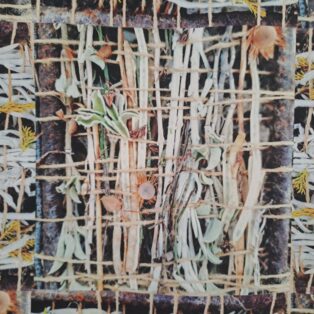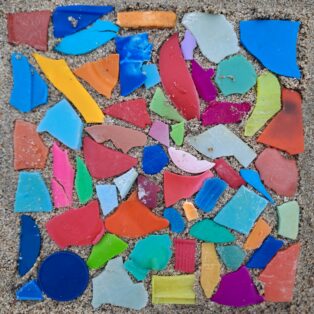Textiles have always been a part of how I understand and participate in the world. One of my earliest memories is of lying in the sunshine of my family living room on my parents’ kilim rug and feeling at one with the pattern of it – of being part of something bigger than myself. Since then rugs, hangings and even clothing continue to be how I make any given space my own. And like much of my work on paper, making fabrics is part of a language of materiality that I choose specifically because it is not oil on canvas.
I have made several important textile works in the past few years including Silent Latitude (2019) and more recently Riviera (2024) and continue to explore how this medium can be a place to make work communally, but also to be able to disseminate work and let it take on a life of its own in the hands of its new owner.
What I am doing now is an extension of this work, but without the institutional support that these commissions offer. I am looking at how to make this work and share it myself in ways that feel sustainable, affordable, environmentally conscious and true to myself and my studio practice.
These fabrics are based on actions and reflections made in my surroundings on the island of Aegina where I live. I travel less these days, for health reasons and the increasing need to be rooted where I am instead of constantly being in a blur of motion. Each one of my designs has an ephemeral quality that could never in itself work as a textile, but through documentation and the act of building a pattern, become something more enduring. I present the making of the pattern as part of the work, in this case on my website, but in exhibition form also.
I produce micro-batches of each fabric, no more than ten metres (what I can currently afford to produce each time) and I sell these as Fat Quarters ( approx. 50cm x 70cm), or as one-off garments I make myself.
Each section works as a work of art in itself, that can be framed like an edition, or it can be transformed into something by its owner. It sits across these areas of fine art, craft and the decorative arts that are all important to me.
The garments I make are zero-waste utilitarian designs inspired by the Italian Futurist artist and designer Thayaht.

